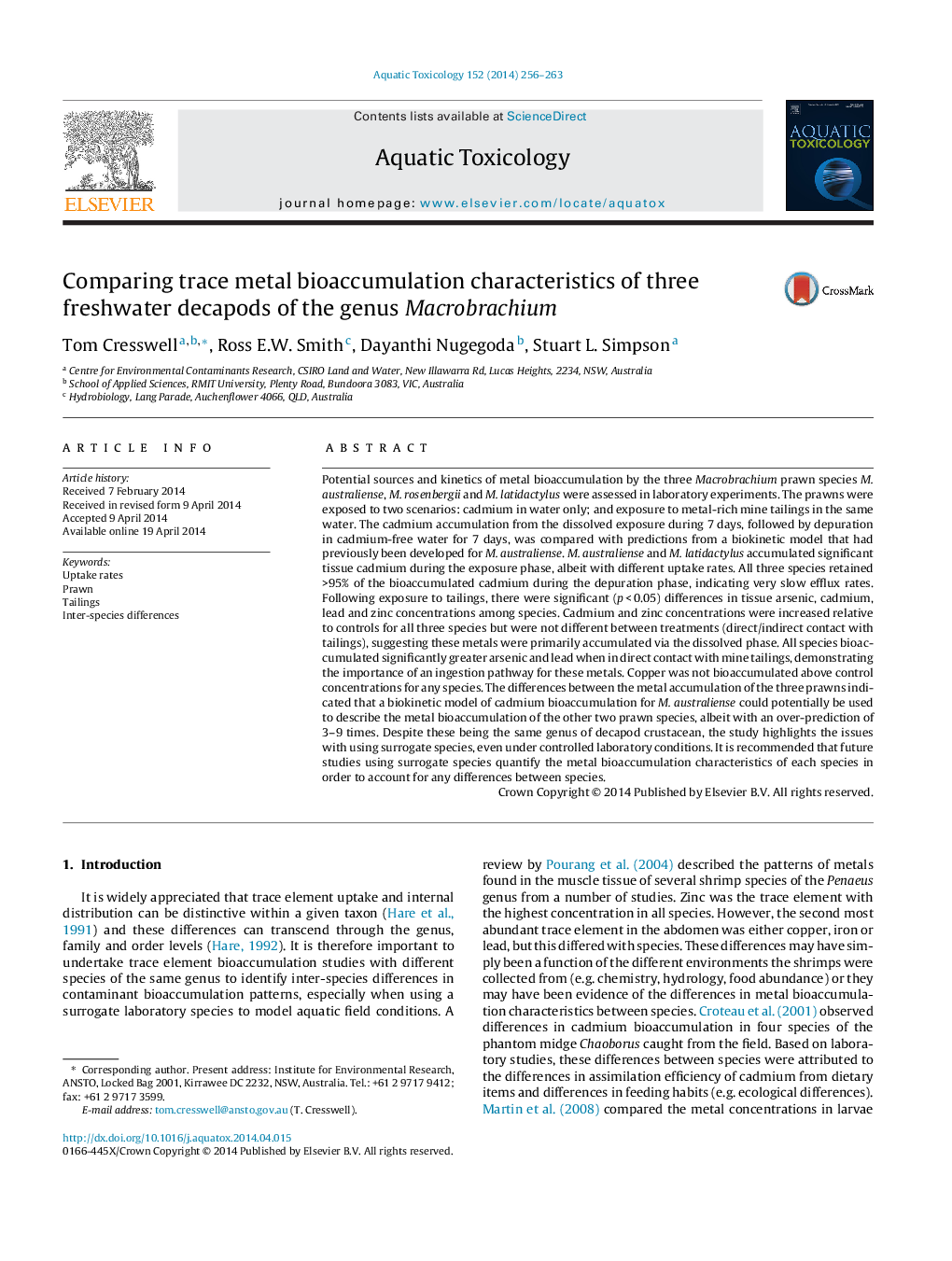| کد مقاله | کد نشریه | سال انتشار | مقاله انگلیسی | نسخه تمام متن |
|---|---|---|---|---|
| 6382405 | 1625953 | 2014 | 8 صفحه PDF | دانلود رایگان |
عنوان انگلیسی مقاله ISI
Comparing trace metal bioaccumulation characteristics of three freshwater decapods of the genus Macrobrachium
دانلود مقاله + سفارش ترجمه
دانلود مقاله ISI انگلیسی
رایگان برای ایرانیان
موضوعات مرتبط
علوم زیستی و بیوفناوری
علوم کشاورزی و بیولوژیک
علوم آبزیان
پیش نمایش صفحه اول مقاله

چکیده انگلیسی
Potential sources and kinetics of metal bioaccumulation by the three Macrobrachium prawn species M. australiense, M. rosenbergii and M. latidactylus were assessed in laboratory experiments. The prawns were exposed to two scenarios: cadmium in water only; and exposure to metal-rich mine tailings in the same water. The cadmium accumulation from the dissolved exposure during 7 days, followed by depuration in cadmium-free water for 7 days, was compared with predictions from a biokinetic model that had previously been developed for M. australiense. M. australiense and M. latidactylus accumulated significant tissue cadmium during the exposure phase, albeit with different uptake rates. All three species retained >95% of the bioaccumulated cadmium during the depuration phase, indicating very slow efflux rates. Following exposure to tailings, there were significant (p < 0.05) differences in tissue arsenic, cadmium, lead and zinc concentrations among species. Cadmium and zinc concentrations were increased relative to controls for all three species but were not different between treatments (direct/indirect contact with tailings), suggesting these metals were primarily accumulated via the dissolved phase. All species bioaccumulated significantly greater arsenic and lead when in direct contact with mine tailings, demonstrating the importance of an ingestion pathway for these metals. Copper was not bioaccumulated above control concentrations for any species. The differences between the metal accumulation of the three prawns indicated that a biokinetic model of cadmium bioaccumulation for M. australiense could potentially be used to describe the metal bioaccumulation of the other two prawn species, albeit with an over-prediction of 3-9 times. Despite these being the same genus of decapod crustacean, the study highlights the issues with using surrogate species, even under controlled laboratory conditions. It is recommended that future studies using surrogate species quantify the metal bioaccumulation characteristics of each species in order to account for any differences between species.
ناشر
Database: Elsevier - ScienceDirect (ساینس دایرکت)
Journal: Aquatic Toxicology - Volume 152, July 2014, Pages 256-263
Journal: Aquatic Toxicology - Volume 152, July 2014, Pages 256-263
نویسندگان
Tom Cresswell, Ross E.W. Smith, Dayanthi Nugegoda, Stuart L. Simpson,